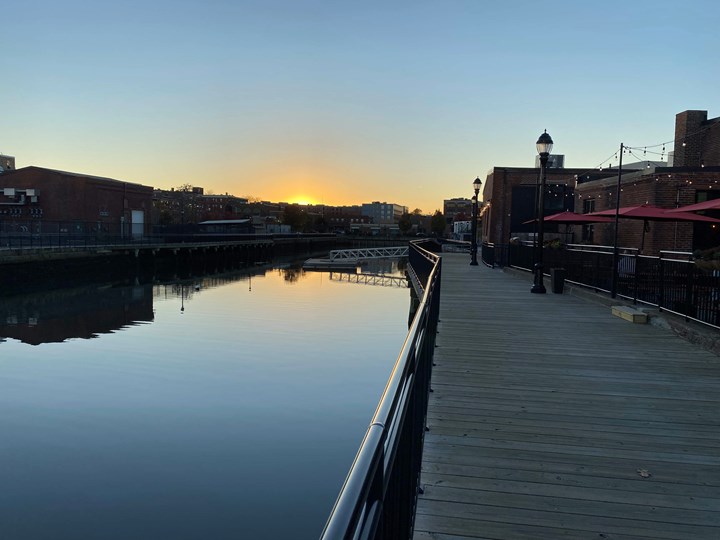EPA Proposes Information Collection Request for Surface Finishing PFAS Water Discharge Rule
NASF releases regulatory alert on EPA information collection request for PFAS wastewater discharge rule.

NASF recently alerted members that the US Environmental Protection Agency (EPA) would soon take a major step in developing a nationwide wastewater discharge rule to control per- and polyfluoroalkyl substances (PFAS) associated with surface finishing operations.
As anticipated, EPA has now proposed a formal Information Collection Request (ICR) to collect data from the surface finishing industry to be used for the rule. November 16, 2022, Federal Register (87 Fed. Reg. 68689)
The agency plans to issue a proposed rule with new discharge requirements for the finishing sector by the summer of 2024.
NASF Government Affairs through The Policy Group have been working closely with EPA on this process for the past year. More information on the rulemaking is available on the EPA website at: https://www.epa.gov/eg/metal-finishing-effluent-guidelines and https://www.epa.gov/eg/electroplating-effluent-guidelines.
EPA’s Proposed Information Collection Request
Currently, EPA does not have sufficient information on specific facility operations (including use of hexavalent chromium or PFAS), generation and management of wastewater, or wastewater characteristics, which the agency has determined as essential information for the development of ELGs to address PFAS discharges.
EPA is proposing both a questionnaire and wastewater sampling program for metal finishing and electroplating operations to complete a detailed technical and economic analysis for the entire industry necessary for the rulemaking process.
Specifically, EPA has prepared a mandatory questionnaire to be completed by surface finishing facilities that have conducted chromium plating processes and have used PFAS. NASF has already reviewed EPA’s draft survey and submitted informal comments to EPA officials on the draft questionnaire. A copy of the draft questionnaire is available for members’ review at: Chromium Finishing Questionnaire_0.pdf (epa.gov).
Request for Comments on Proposed ICR
EPA is soliciting formal comments on the questionnaire and the potential burden on facilities that are required to complete the survey. Specifically,
EPA is soliciting comments and information to enable it to: (i) evaluate whether the proposed collection of information is necessary for the proper performance of the functions of the agency, including whether the information will have practical utility; (ii) evaluate the accuracy of the agency’s estimate of the burden of the proposed collection of information, including the validity of the methodology and assumptions used; (iii) enhance the quality, utility, and clarity of the information to be collected; and (iv) minimize the burden of the collection of information on those who are to respond, including through the use of appropriate automated electronic, mechanical, or other technological collection techniques or other forms of information technology, e.g., permitting electronic submission of responses. 87 Fed. Reg. at 68689.
In the Federal Register notice EPA indicated that it has compiled a list of 1,815 potential chromium plating facilities that it plans to send the questionnaire. All active metal finishing and electroplating facilities that conduct or have conducted one or more of the specified chromium finishing operations will be required to complete the questionnaire.
EPA estimated that the total estimated burden (i.e., the hours needed to complete the questionnaire) is 35,858 hours and the total estimated cost to comply with the ICR is $1,696, 682. That would be approximately only 20 hours per facility at a cost of $934 per facility. NASF’s estimates of burden and costs are significantly higher than those from EPA.
NASF Actions Underway | Comments to Be Submitted to EPA
NASF continues to work closely with EPA officials on the rule and plans to submit formal comments on the proposed Information Collection Request focusing on the need for some of the information and the overall burden for facilities that will be required to provide the information to EPA. There is a 60-day comment period with comments due on January 17, 2023. EPA has indicated that it plans to send out the questionnaire in the March or April of 2023.
After EPA collects data from surface finishing facilities, NASF will closely review and evaluate this information to determine if EPA’s analysis reflects the current state of the industry and if any options proposed for PFAS discharge standards are justified or technologically and economically feasible.
If you have any questions or would like additional information about this process, please contact Jeff Hannapel and Christian Richter with NASF at jhannapel@thepolicygroup.com or crichter@thepolicygroup.com.
This update is courtesy of the National Association for Surface Finishing (NASF). For more information or to become a member, visit nasf.org.
Related Content
Finishing Another Year — Looking Back at the Trends of 2023
Products Finishing reflects on a year of reporting on the surface finishing industry and looks ahead to what may be in store for 2024.
Read MorePrecision Coating Receives ISO 14001 Certification
The company says its commitment to the environment and its health led it to seek this certification.
Read MoreReducing VOCs
Coating materials (paint and solvent) are one of the most significant sources of VOC generation. John Owed of Carlisle Fluid Technologies offers advice for reducing VOC consumption.
Read MoreThe Future of Hard Chrome: Pioneering Innovations for Sustainable Solutions
Although useful, chromic acid and other compounds that contain hexavalent chromium ions are highly toxic and carcinogenic. However, one company has developed an alternative for the hard chrome process that achieves thick, conformal coatings with wear and fatigue resistance comparable or superior to hexavalent chromium-based systems.
Read MoreRead Next
Episode 45: An Interview with Chandler Mancuso, MacDermid Envio Solutions
Chandler Mancuso, technical director with MacDermid Envio discusses updating your wastewater treatment system and implementing materials recycling solutions to increase efficiencies, control costs and reduce environmental impact.
Read MoreEducation Bringing Cleaning to Machining
Debuting new speakers and cleaning technology content during this half-day workshop co-located with IMTS 2024.
Read MoreDelivering Increased Benefits to Greenhouse Films
Baystar's Borstar technology is helping customers deliver better, more reliable production methods to greenhouse agriculture.
Read More












.jpg;maxWidth=300;quality=90)












